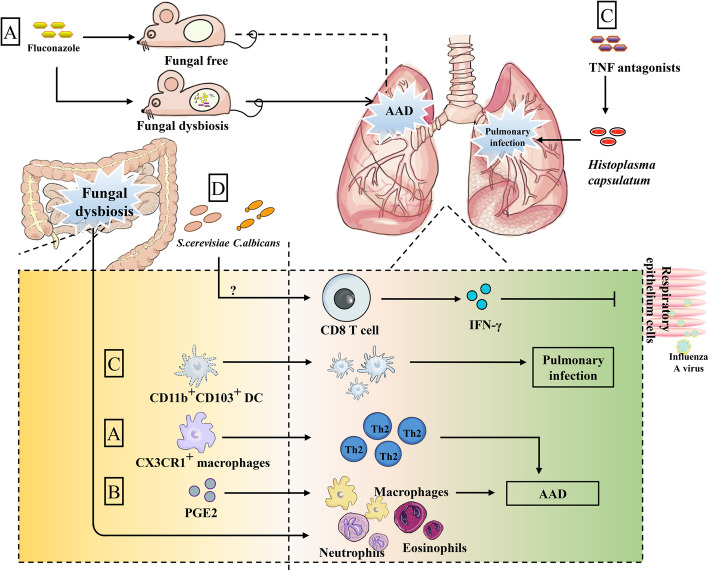Fig. 3.
Potential mechanism of gut mycrobiota in gut-lung axis. (a) Intestinal fungal dysbiosis caused by fluconazole is sufficient to deteriorate lung AAD induced by house dust mite (HDM) but has no influence in mice without gut mycobiota. Fluconazole-induced dysbiosis of gut mycobiota stimulates intestinal CX3CR+ macrophages, leading to Th2 amplification accompanied with lung infiltration by macrophages, neutrophils, and eosinophils. (b) Also, gut fungus-induced PGE2 promotes M2 polarization of alveolar macrophages to aggravate AAD. (c) TNF antagonists enhance the susceptibility of Histoplasma capsulatum-induced pulmonary infection, during which intestinal specific CD11b+CD103+ DCs migrate and augment in the lung to enhance pulmonary infection. (d) Intestinal colonization by C. albicans and S. cerevisiae triggers viral-specific CD8 T cells in the lung (with unknown reasons) and production of IFN-γ, ultimately, preventing the influenza virus from invading the respiratory epithelial cells. AAD, allergic airway diseases; PGE2, Prostaglandin E2; TNF, tumor necrosis factor; DCs, dendritic cells. Arrows represent activation and horizontal lines represent suppression

